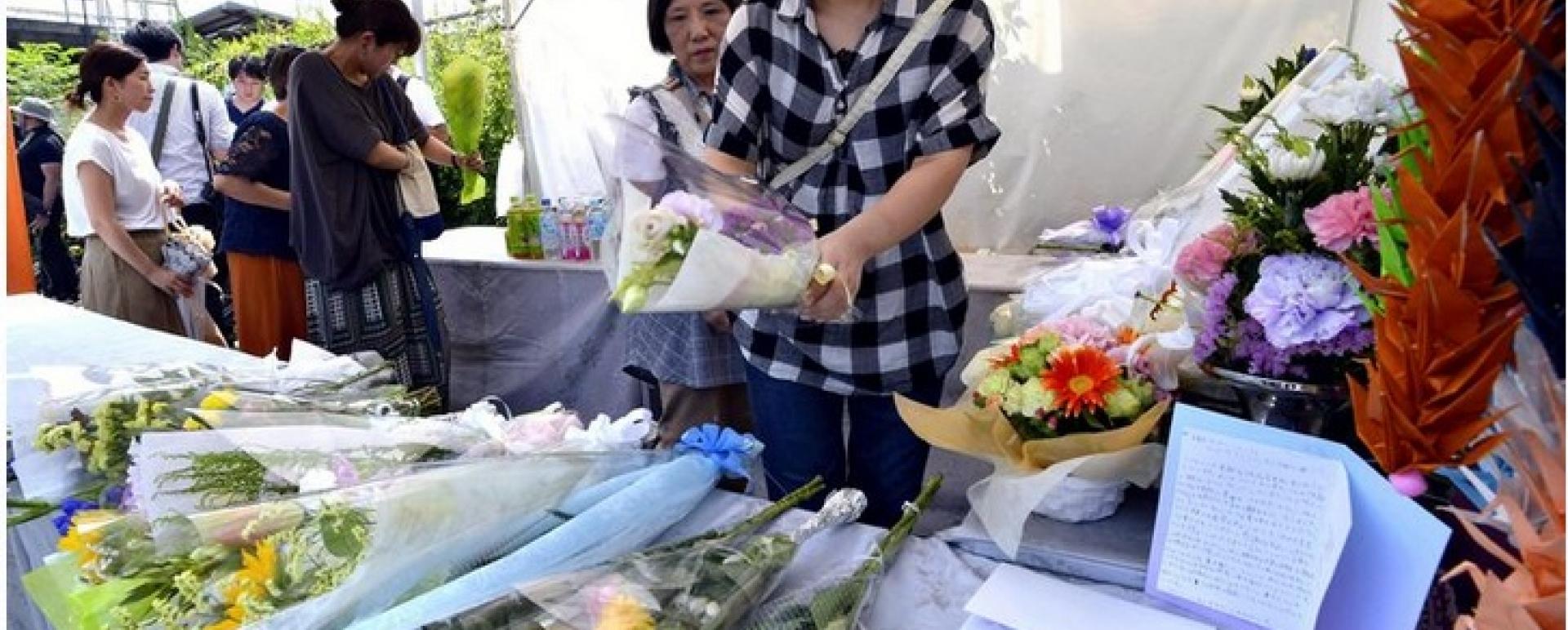The Yomiuri Shimbun
KYOTO — Sunday marked one month since the arson attack on a Kyoto Animation Co. studio that left 35 people dead.
Many continue to ask why animators — who brought life to the images they created and joy to their fans — had to lose their lives. The family members and friends they left behind struggle to make it through the day.
While still dealing with injuries from the incident, some employees of Kyoto Animation — affectionately known as KyoAni — are looking ahead to delivering new creations to fans.
“Undauntedly continue to create KyoAni productions — that’s something I can do right now,” said a male employee, 52, who escaped from the burning studio and returned to his job about a week later to work on a new movie.
On the day of the arson attack, he was drawing backgrounds as usual at his desk on the second floor when someone yelled, “Fire!” As soon as he heard the voice, the room filled with smoke.
Unable to use the stairs employees had taken in evacuation drills, he instinctually went out on a nearby balcony. He hesitated, as he was about four meters off the ground, but decided to jump after people called to him from below. “You can make it” and “Jump down,” he recalled them saying.
He suffered bruises on both arms when he landed, and was taken away by ambulance without understanding what was going on. He did not learn that the fire had been caused by arson and that he had lost many colleagues until he saw the news after returning home that evening.
The man started working at KyoAni in the 1980s, not long after the company was founded. Previously he had been working as a subcontractor for a large anime company, specializing in finishing with coloring.
At the time, the anime industry mostly operated off a piecework system, with animators being paid a few hundred yen for each cel. However, President Hideaki Hatta and others wanted to create a company that rewarded its animators. Workers received full-time contracts, and young employees were given the chance to develop on stable salaries. The company had an open atmosphere in which younger employees felt free to make proposals to their bosses and senior workers.
The fire took away this workplace and his colleagues in an instant.
Of the 35 victims, 27 were young employees in their 20s and 30s. Thirty-four people were injured in the attack, eight of whom are still hospitalized. Some may never return to work.
“It was like my family. They were close friends,” the man said. “We lost the people who were going to be the next generation of animators.”
He is still in pain from his injuries and tormented by a deep sense of loss. Nevertheless, he decided returned to work because “I like to draw.” Some other employees who were injured in the attack have also come back, the man said.
“If this destroys the company, that’s what the suspect wanted. The only way to fight back is to create good things with no drop in quality,” the man said, explaining how he motivated himself to get back to work.
Animator lost in attack was ‘always smiling’
Futoshi Nishiya, 37, was one of the people killed in the fire. As a character designer, Nishiya was involved in shaping the roles in many recent KyoAni productions, including “Free!” “A Silent Voice” and “Hyouka.”
One of the company’s most prominent animators, Nishiya was popular among fans for his delicate touch. Social media posts mourning his loss have been unending.
Nishiya was from Onomichi, Hiroshima Prefecture. He joined KyoAni after attending a vocational school in Osaka.
“Nishiya was always smiling. I never saw him angry,” said a 37-year-old man who was Nishiya’s classmate from nursery school to high school, his voice quavering. “I still can’t believe he’s dead.”
Nishiya’s nickname in elementary school was “Nitchan.” He loved anime back then as well. Friends say he was obsessed with “Neon Genesis Evangelion” and excelled at drawing characters from the show.
The classmate said Nishiya gave him a drawing when they graduated from high school. They stayed in touch after Nishiya left their hometown.
Not long after he joined KyoAni, Nishiya told him he was drawing for the animated version of “Crayon Shin-chan.” Nishiya once gave him an illustration he said he drew for practice.
“Why did he have to die? I still feel like I’ll see him again when he comes back home,” the man said. He said he cannot stop thinking about Nishiya and has had trouble focusing on his work.






